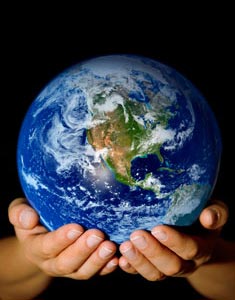Edges
A project I have been working on is concluding – a written report with recommendations. My volunteer role on this one has been that of recording secretary, though I have worked on similar projects as a consultant, and it reminds me of why consultants exist in the first place. There is some degree of truth in the cynical definition, “A consultant is a person who borrows your watch to tell you the time”. In my own experience, working with clients who wanted to build a cultural center, the client was full of ideas, but had reached an impasse. Their RFP to the prospective consultants told them what to provide next, though if they knew that, why did they need consultants? The senior one on my projects had wide experience and knew that the real task was to forge a deal among a variety of stakeholders to make it happen. The missing elements of the dream were the funds. Much of the job was re-educating the clients to the needs of their finished product – design ones, that they had never considered. In a theatre for example, the lobby and backstage each had to be bigger or comparable in size to the auditorium. Bar sales in the intermission often generated more revenue than ticket sales.
In applying the framework to organization change instead creating of a building, the client wants something better, but also doesn’t know how to get there either. Describing “better” very often means a return to a past with better memories. This has been particularly true after the pandemic with a “Make our organization great again” but ignoring the current context. Sometimes that’s easy to correct via demographics and other cultural changes within the broader context. Nearly all organizations swim in their own environment – sometimes feeling guilty at their lack of success without realizing the changes in the wider world over which they have little control.
One of the remedies in the 20th century was polling, without recognizing how polling suggested how things were going to end, and influenced choices before individuals made them. In the recent exercise this became translated as listening to as broad a membership as possible. They participants were given a chance to meet on Zoom, in contrast to a previous one where surveys were the form of polling, though surveys were used as well. Those in charge of the process were so inundated with data, that they soon had to hire another person to make sense of it – which almost sounded like an assignment for AI. Instead, the data was carefully coded to find out what views rose to the top. As someone well versed in interpreting data, she was helpful in warning of unrealistic expectations in what was hoped for and did an excellent job of showing why it was untenable. In my own reading of the raw data of the Zoom sessions, I noticed a reinforcement of what early participants identified as a problem. It was easier to agree than to offer dissent.
In the course of history, group opinion matters a good deal, but the initial formation of something new often happens at the edge. One person offers something interesting, and it is ignored by the group. If the consultants already have a plan as to how they want a study to unfold, they will also commend the unusual but then dismiss it.
I’m sometimes on the receiving end of the study as well as the strategic side and I’ve offered something on the edge, I used to feel hurt when my idea gained no traction whatsoever. But I’ve become more patient and learned to smile when I see a revolutionary concept or model shot down. Often a seed gets planted when even one person picks it up and shares it. Years later, the idea or model re-emerges to gain traction and the seed becomes a bright new thing to be planted; it grows. The later adapters take all the credit of course, but that’s all right. The importance is that the new model is born and is alive and well. We shall wait and see what happens on the next round as to whether the interesting idea takes root.

